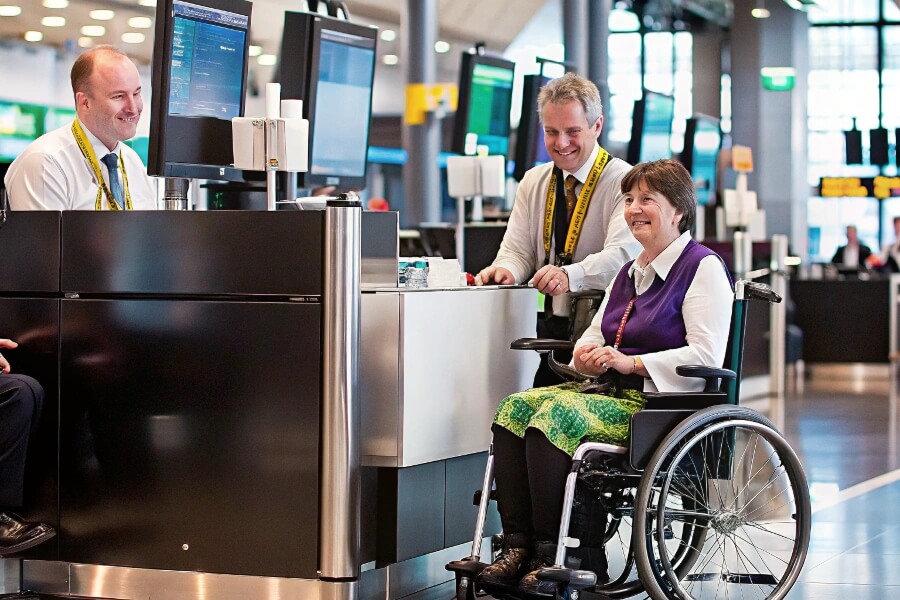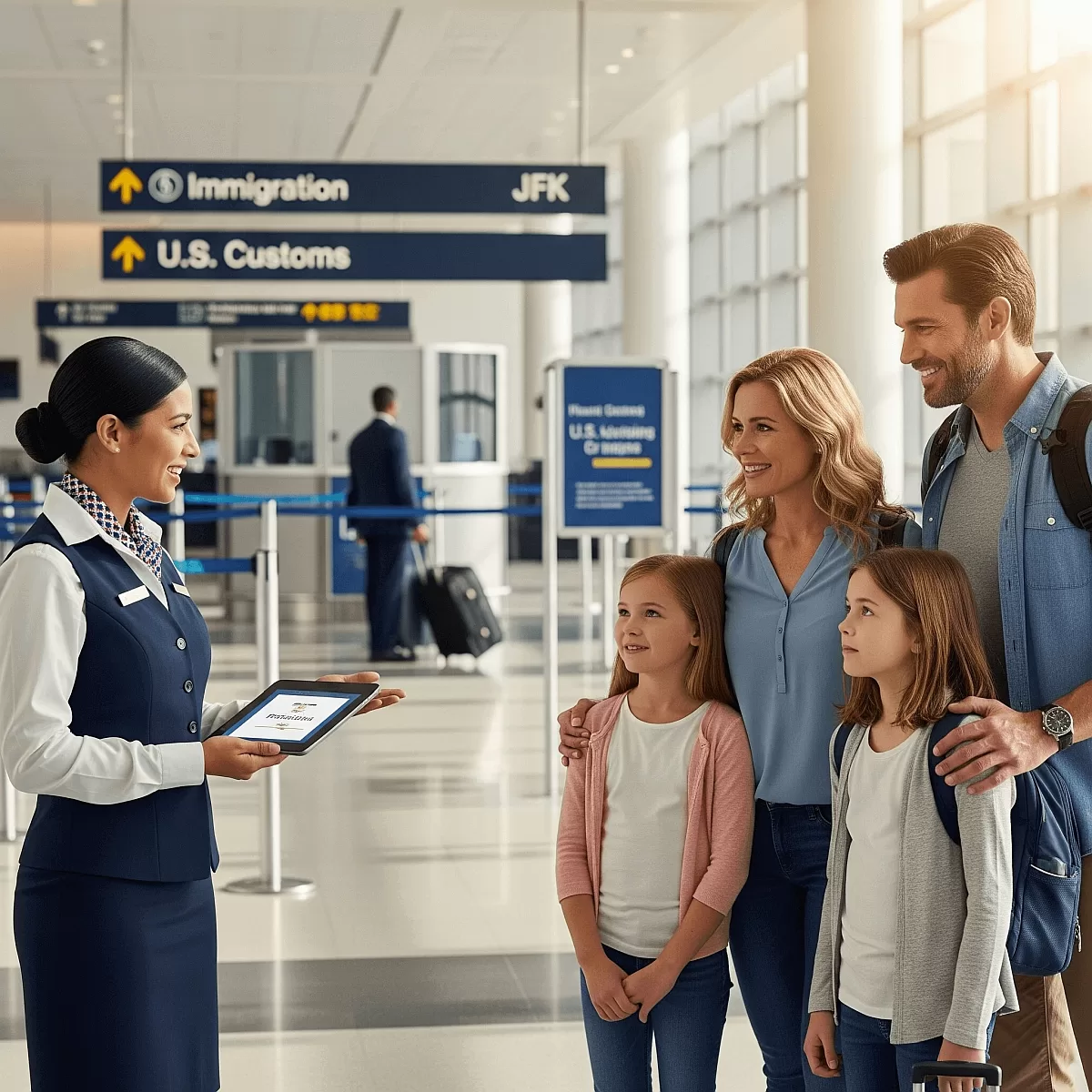Improving Accessibility: How Airports Support Special Needs Travelers
Air travel can be a complex experience for any traveler, but it presents unique challenges for passengers with special needs. Fortunately, airports worldwide are working to create more accessible environments, allowing passengers with mobility, hearing, visual impairments, or other disabilities to travel easily. In this article, we explore how airports are improving accessibility and supporting special needs travelers.
1. Improved Airport Infrastructure for Mobility Assistance
One key area where airports are making strides is improving infrastructure for travelers with mobility impairments. From wheelchair users to those who need assistance walking long distances, airports are upgrading facilities to enhance accessibility.
- Ramps and Elevators: Modern airports have ramps and elevators designed to accommodate wheelchairs, making it easier for passengers to navigate terminals.
- Accessible Restrooms: Dedicated restrooms with wider doors, grab bars, and lower sinks are available in most international airports, ensuring convenience for travelers with mobility needs.
- Priority Parking Spaces: Accessible parking spaces near terminal entrances are reserved for travelers with disabilities, reducing the distance they need to travel.
- Electric Golf Carts: Airports often provide electric golf cart services to transport passengers with limited mobility quickly and comfortably across long distances.
2. Special Assistance Services for Seamless Travel
Beyond infrastructure improvements, airports offer various special assistance services to help passengers with disabilities navigate the airport experience more smoothly.
- Pre-Booking Assistance: Many airports encourage passengers with special needs to pre-book assistance services. This ensures that airport staff are prepared to meet them upon arrival, provide help with check-in, and guide them through security.
- Escort Services: Airports provide personal escorts to help passengers move through security and boarding gates. Trained staff are available to assist passengers with disabilities throughout their journey.
- Meet & Greet Services: Some airports offer meet-and-greet services tailored specifically for travelers with disabilities. These services ensure a stress-free arrival, departure, or transit experience with full support at each stage.
3. Accessible Security Procedures
Navigating airport security can be a daunting task for passengers with special needs. Airports have introduced several measures to ensure that security checks are accessible and comfortable for everyone.
- Dedicated Security Lanes: In many airports, travelers with disabilities can access priority security lanes, allowing them to pass through with minimal wait times.
- Screening Adjustments: Airport security staff are trained to handle screening procedures with sensitivity, and they offer alternative methods to screen passengers with medical devices, prosthetics, or mobility aids.
- Clear Communication: To ensure passengers with hearing impairments understand security procedures, visual aids and written instructions are often provided. For visually impaired travelers, security staff are trained to offer verbal instructions and physical assistance when needed.
4. Visual and Auditory Accessibility Enhancements
Travelers with hearing and visual impairments also benefit from various accessibility enhancements to make their airport experience more manageable.
- Hearing Loops: Many airports are now equipped with hearing loops, which help passengers with hearing aids to hear announcements more clearly in noisy environments.
- Subtitled Announcements: Some airports have begun adding subtitles to flight information displays and other public announcements to assist deaf passengers.
- Tactile Signage and Floor Markings: Airports are incorporating tactile floor markings and Braille signage throughout terminals to guide visually impaired travelers safely to check-in counters, gates, and other essential areas.
- Assistance Animals: Passengers traveling with guide dogs or other assistance animals are typically welcomed in airports, with dedicated areas for relief and comfort during layovers.
5. Accessible VIP Lounges and Services
For those who prefer added comfort, many airports offer accessible VIP lounges designed to meet the needs of travelers with disabilities. These lounges provide a quiet, comfortable resting space and offer unique accommodations.
- Wheelchair Accessibility: VIP lounges are designed with easy access for wheelchair users, including wide aisles and accessible restrooms.
- Assistance On-Demand: Staff in VIP lounges are trained to assist passengers with special needs, from helping with food service to providing mobility support within the lounge.
- Private Rooms: Some VIP lounges offer private rooms where travelers with disabilities can rest in a more secluded, comfortable environment.
6. Support for Travelers with Cognitive Disabilities
Airports are also working to accommodate travelers with cognitive disabilities such as autism or dementia, making the travel experience less stressful and more manageable.
- Quiet Rooms and Sensory Spaces: Many airports now feature designated quiet rooms or sensory-friendly spaces where travelers with cognitive disabilities can relax in a calm, low-stimulation environment.
- Staff Training: Airport personnel are increasingly trained to recognize and assist travelers with cognitive disabilities. This includes offering support in confusing or stressful situations and providing personalized guidance through crowded terminals.
- Simplified Navigation: Signage and wayfinding systems are being designed with clarity, using simple language, symbols, and color coding to help passengers with cognitive disabilities navigate the airport more quickly.
7. Digital Innovations for Enhanced Accessibility
Technology is critical in improving the airport experience for travelers with disabilities. Airports are embracing digital solutions that make traveling more accessible and convenient.
- Mobile Apps: Many airports now offer mobile apps that provide real-time information about flight status, gate changes, and terminal maps. These apps often include accessibility features such as voice commands and text-to-speech functionality for visually impaired users.
- Self-Service Kiosks with Accessibility Features: Self-service kiosks for check-in and baggage drop are increasingly designed with accessibility, featuring voice assistance, Braille keypads, and adjustable screens for wheelchair users.
Conclusion
Airports worldwide are stepping up their efforts to improve accessibility for travelers with special needs. Through enhanced infrastructure, personalized assistance services, and digital innovations, the travel experience is becoming more inclusive and comfortable. As airports continue to evolve, passengers with disabilities can look forward to smoother, more enjoyable journeys. Whether through priority services, accessible lounges, or tailored support, these changes make air travel a more welcoming and accessible experience for everyone.







